Discover Six Surprising Facts About a Cat's Tongue

However, cat’s tongues have several purposes. They eat and drink with them. They groom using them. They’re also important for social behavior.
If you’ve ever been licked by a cat, you’ll know that it isn’t like being licked by a dog. Cat’s tongues are rough, and the sensation isn’t entirely pleasant.
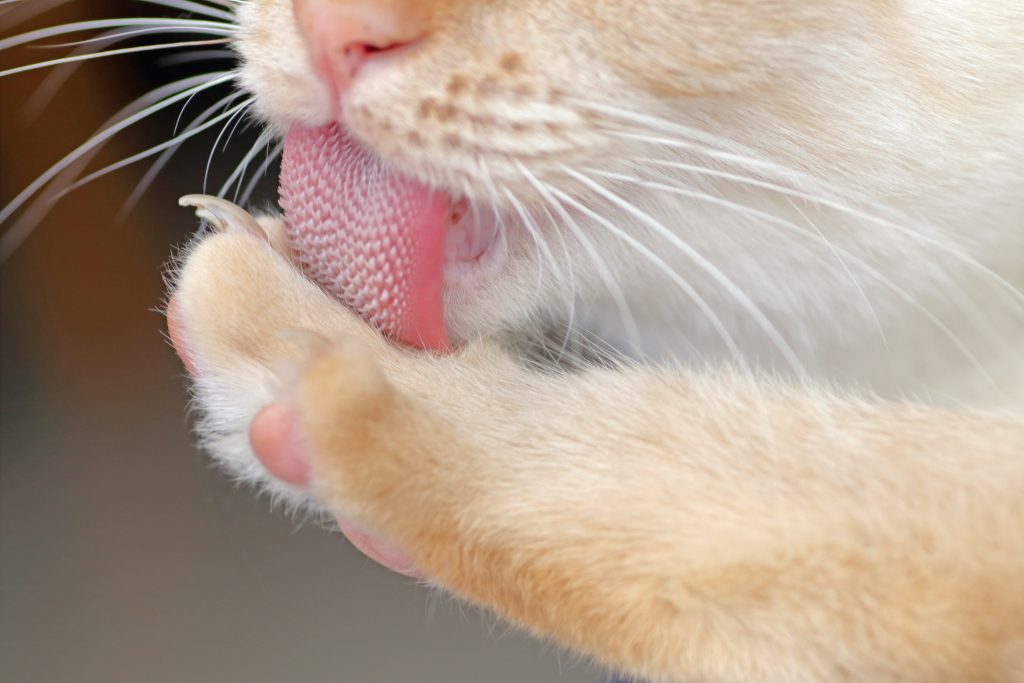
However, cat’s tongues have several purposes. They eat and drink with them. They groom using them. They’re also important for social behavior.
1. A Cat’s Tongue Has Spikes
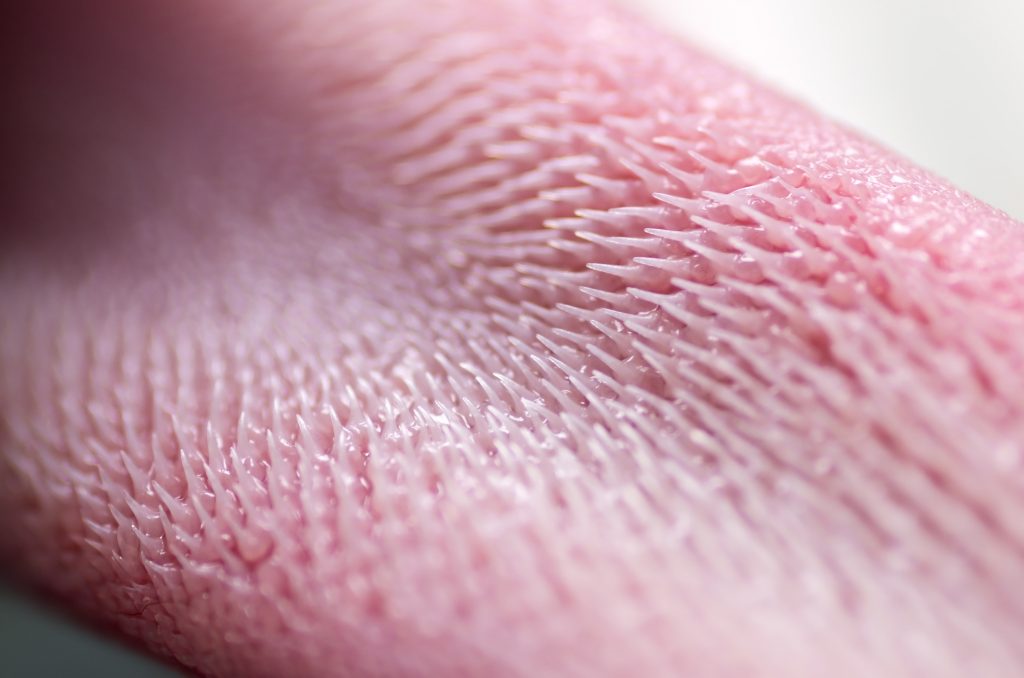
A cat’s tongue has many little spikes, or barbs on it. These are called papillae. These backwards facing barbs are the reason why your cat’s tongue feels rough.
It was once believed that papillae were solid, and shaped like cones. Recent studies have shown that this isn’t actually true. Papillae are hollow, which allows cats to store saliva, and keratin in them for use during grooming. They’re also shaped a little bit like an upside down scoop, and are curved backwards towards the throat.
Papillae And Eating
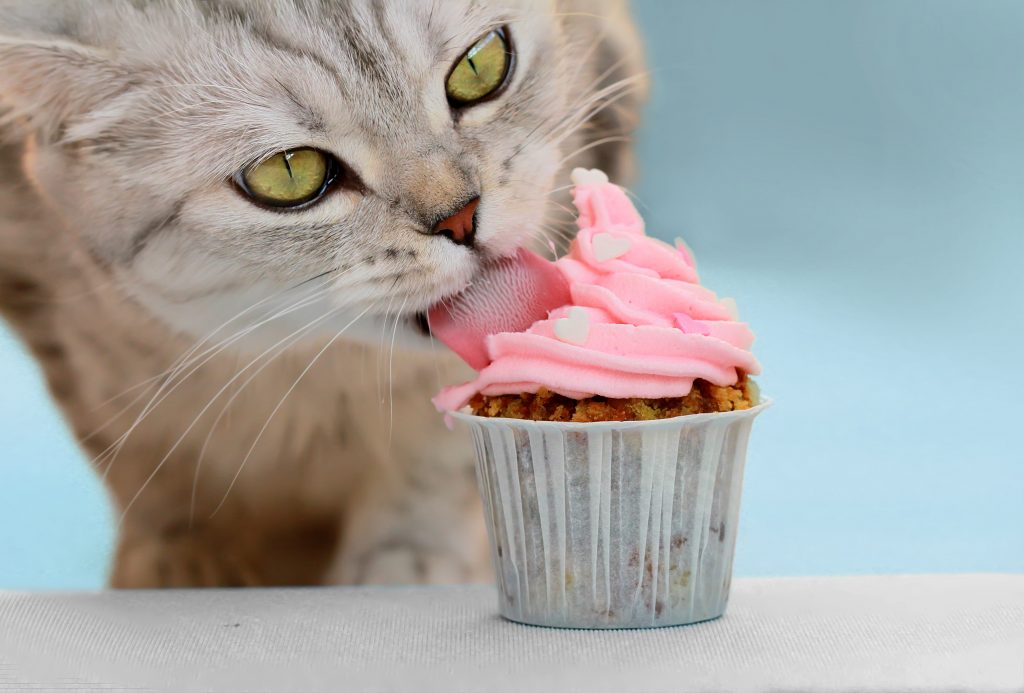
The papillae aren’t only used in grooming. They’re also useful for eating. Cats are obligate carnivores. If left to their own devices, they would only eat small prey animals. They have no need for carbohydrates, and their bodies aren’t designed to digest them properly.
If you look at your cat’s whole mouth, you’ll notice large, sharp incisors. These are designed for shredding meat. You’ll also notice smaller teeth in between the incisors, but these teeth don’t have any purpose when it comes to eating, though they are important for grooming. They actually don’t have any teeth for grinding or chewing, and they also don’t have a jaw that functions in a side to side movement. Everything about them is for hunting and eating meat.
When a cat is eating meat, he’ll use his incisors to shred the meat into chunks, but he’ll also use the papillae on his tongue. Cats will use the barbs to rasp meat away, or to clean off the bones of a prey animal.
The other purpose of the tongue in eating is to test the temperature of the food. As cats are hunters, they like their food to be basically room temperature. They may give any food a tentative lick before eating to make sure that it’s at the right temperature. Cats that live indoors exclusively will still do this when you put their favorite meal in front of them just to be certain it’s okay to eat.
When it comes to eating, some cats are more fussy than even toddlers. Cats can have very clear preferences when it comes to their food, and they will use their tongue to test that the food you’ve offered meets these preferences. They will touch their tongue to the food and assess the taste, texture and size. He can reject the food if he doesn’t think it feels right on his tongue, or just because that’s how he feels at that particular meal time.
2. They Use Their Tongues To Drink In An Ingenious Way
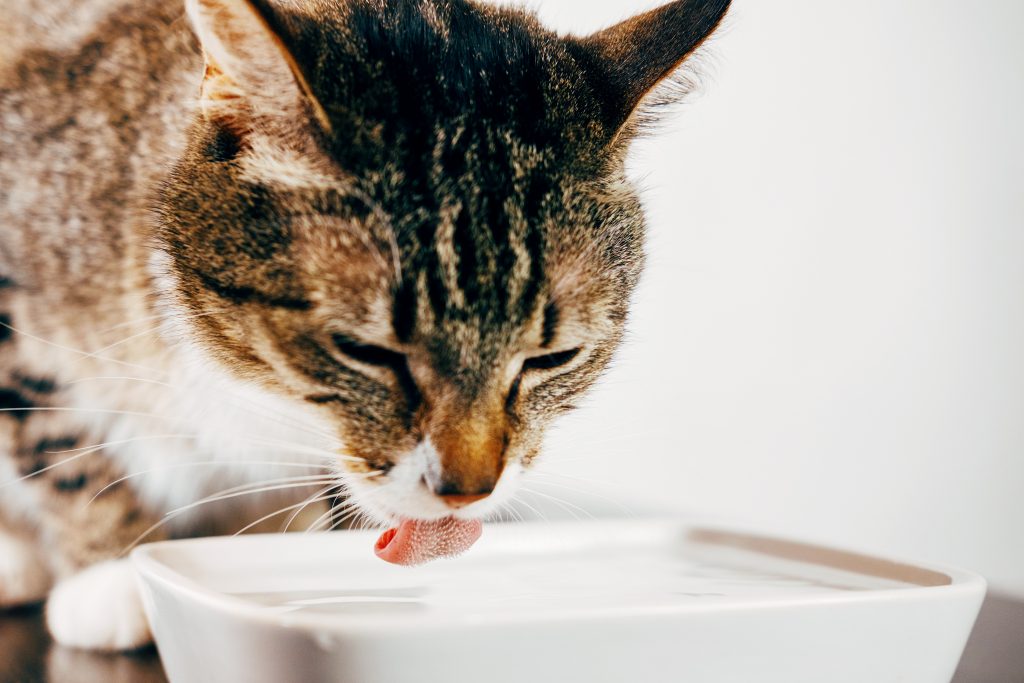
Domesticated cats need to have access to fresh water, but feral, and wild cats can actually get almost all of their liquid intake from their prey. The amount of water a domesticated cat needs on a daily basis depends on what his diet is. Cats on a dry food diet will need more than cats who eat both wet and dry food, or exclusively eat wet food. Regardless of the diet, every domesticated cat needs to have fresh water available to him.
When you watch a cat drink water, you probably won’t be able to see exactly how the tongue works. Cats don’t drink water in the same way as a dog. Research from MIT shows that a cat uses the very tip of the tongue to flick the water. They use the tongue, papillae and neat speed to direct the water against gravity and into the mouth.
Cats have evolved to drink extremely efficiently. Their tongues, and mouths have been designed to get the most amount of water with the least amount of effort. The researchers found that cats can make an average of four laps per second.
The MIT research also found that bigger cats don’t drink as quickly as domestic cats do. They don’t need to as their tongues are much bigger.
3. Their Tongues Make Great Grooming Brushes
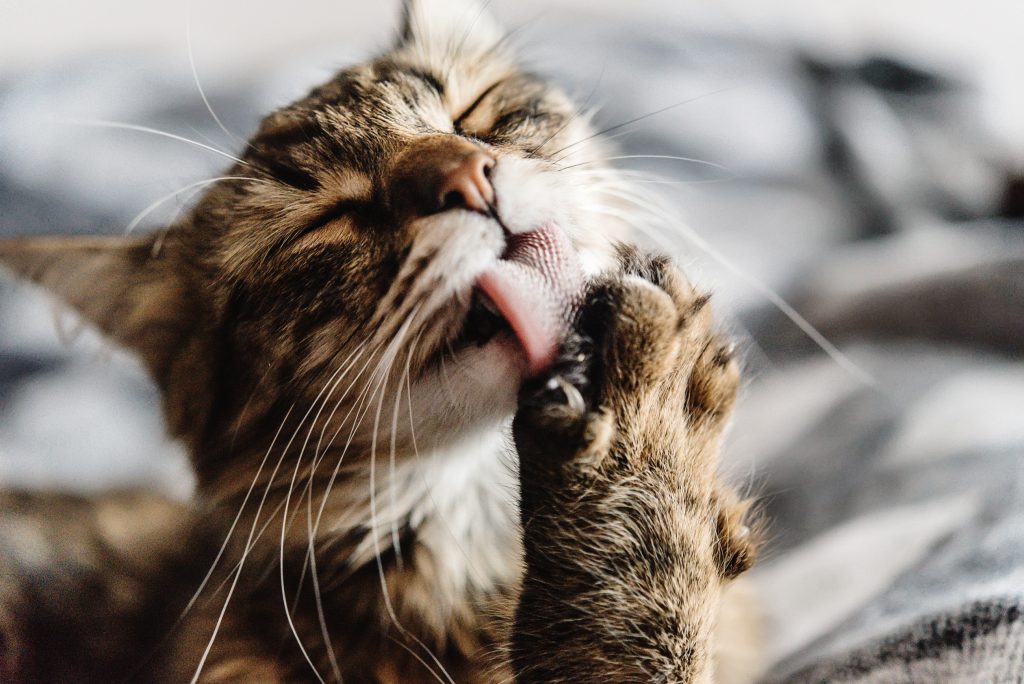
Cats spend roughly an hour per day grooming themselves. They don’t do all their grooming in one session, but will groom different body parts in short bursts. Their tongues become a multi-purpose grooming tool depending on which body part needs to be cleaned. The barbs on the tongue are perfect for working out tangles, and even getting into the underlayer of fur.
When cats brush out tangles, stray hairs and other debris from their fur, they can’t actually spit it all out after. They have to swallow it. The papillae make it easier for the cat to move the hairs through the mouth and down into the stomach.
Why Do Cats Groom Themselves?
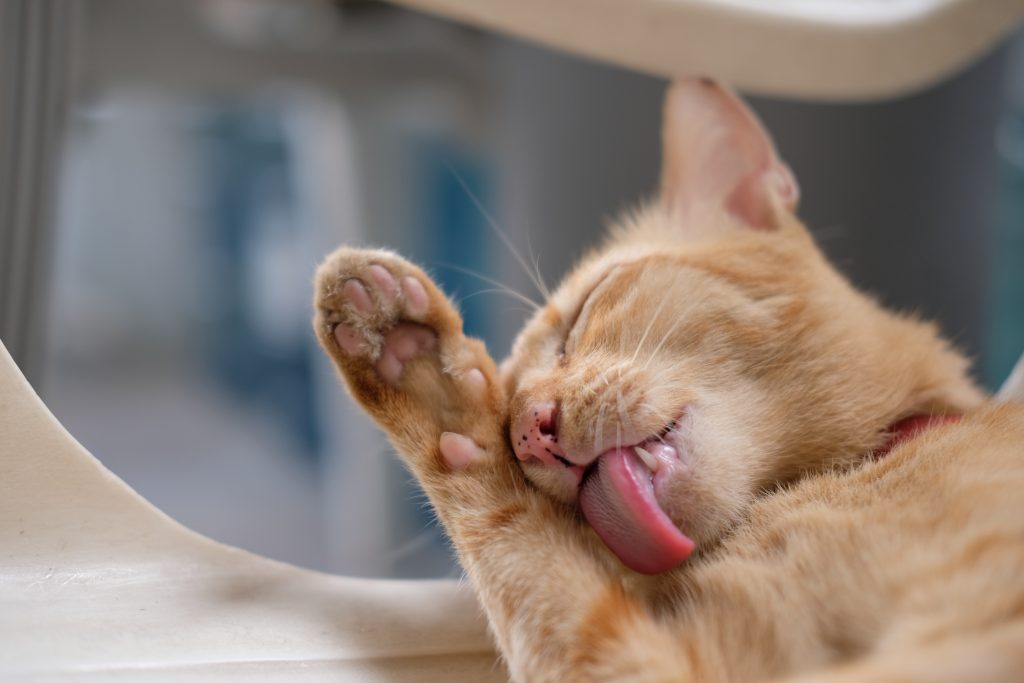
A cat’s world relies largely on scent. They scent mark to show their territory, they rub against their owners to show that they’re all part of the same family, and they groom to cover themselves in their own scent.
You may notice that your cat grooms himself almost immediately after eating a meal. Feral cats will do this after hunting as well. It’s an inborn response that all cats have. They need to remove the scent of their meal, and where they were. This means that the smell of their prey won’t warn any other prey animals in the area of danger, or potentially attract a larger predator to them. It also hides the smell from other cats, who may try to enter the territory to hunt.
Cats don’t generally pant like dogs do, so they don’t regulate their body temperature in the same way. In fact, if your cat is panting, it’s usually an indication that something is wrong. One of the ways that they cool down is by licking themselves. The saliva from grooming evaporates off the fur and skin, so the effect is similar to sweating in humans.
Another reason for grooming is to keep themselves clean. They use the papillae on the tongue to work out tangles and debris from the inner layer of fur. If there is a particularly difficult tangle, they can also use their teeth to detangle the hair.
However, the papillae are one of the most important parts of grooming. Research has found that most cats have just the right length of papillae to be able to penetrate through their coats and groom themselves. The only exception to this is the long hair Persian cat who will need some help in keeping himself clean.
Cats Don’t Only Groom Themselves
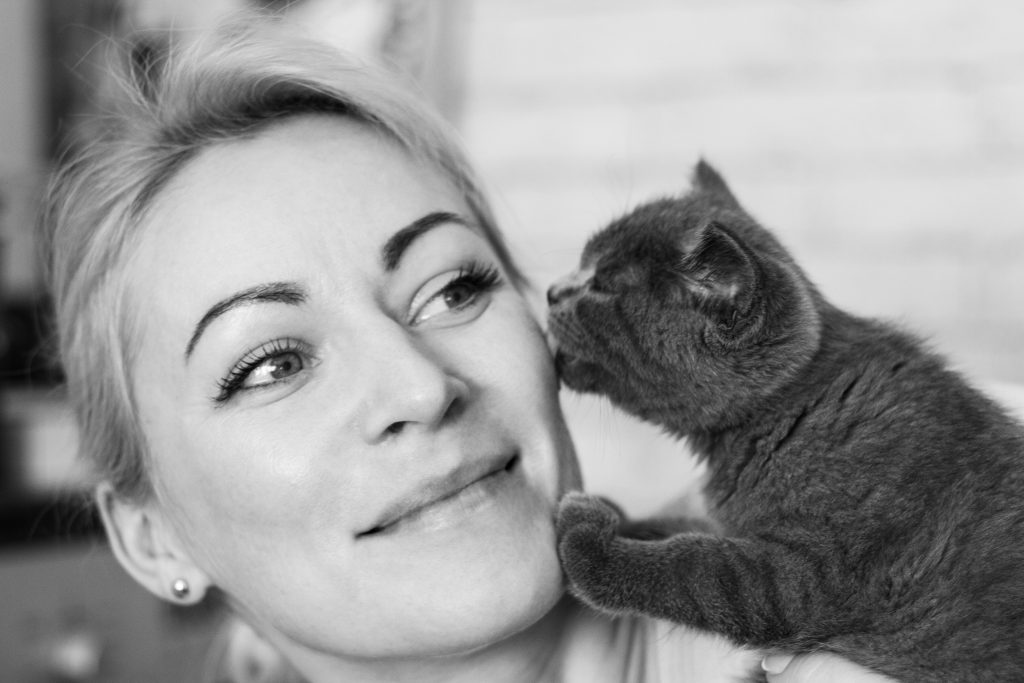
Cats can perform grooming on each other, and on their preferred humans as well. This is known as allogrooming. There’s a few reasons why they do this.
Firstly, a mother cat will groom her kittens to make sure her scent is on them. This means that she will always recognize them, and they will always recognize her, and each other, especially when their eyes are still closed. She also grooms them to help them stay clean, and to stimulate urinating and defecating. She also grooms them to comfort them.
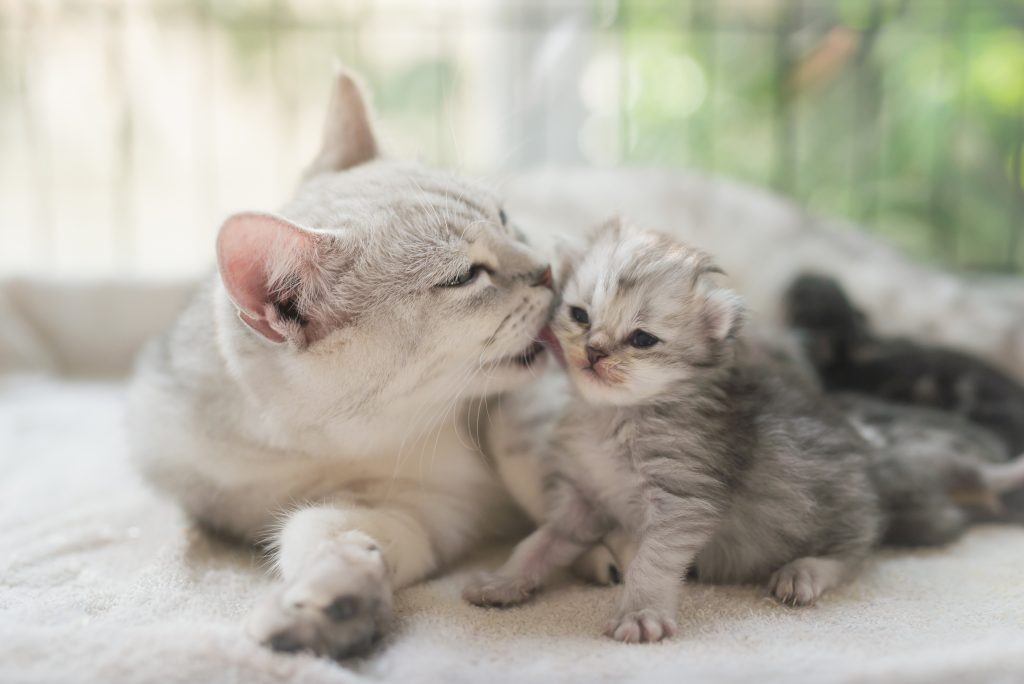
When they begin grooming themselves, they will also groom each other as a way to bond and to comfort each other. They can retain this behavior into adulthood, and may groom other cats in their household.
Cats may also lick and try to groom humans. This is often a sign of affection, but it’s also a way for your cat to scent mark you so other cats know that you are part of his family. Sometimes, they will try to groom you if you have tried a new skin lotion, or have some substance on your skin.
Overgrooming
Some cats will spend too much time grooming themselves when they become stressed. As the tongue is the perfect detangling tool, overgrooming can become a problem.
Grooming himself releases endorphins which make your cat feel relaxed and happy. If he’s feeling very stressed, he’ll groom himself to get that release, but if he remains stressed, he’ll continue grooming to continue to feel the effects of the endorphins. This can lead to bald areas where he’s focused his grooming.
This is called psychogenic alopecia. If the cause of the stress isn’t resolved, or the psychogenic alopecia isn’t treated in the early stages, it can lead to sores, and even self mutilation.
Grooming Your Cat
Most cats don’t actually need help to keep themselves clean. Some longer haired breeds will need a proper grooming routine, but generally, cats are capable of cleaning and grooming themselves. However, grooming your cat can be a great opportunity to bond, and let him groom you as well. There are some brushes that are designed to mimic a cat’s tongue, and imitate his natural grooming. Some brushes are even shaped exactly like a cat’s tongue, and there are even some that fit in your mouth, so you can give him a full allogrooming experience!
4. Tongues Can Be A Sign Of Health
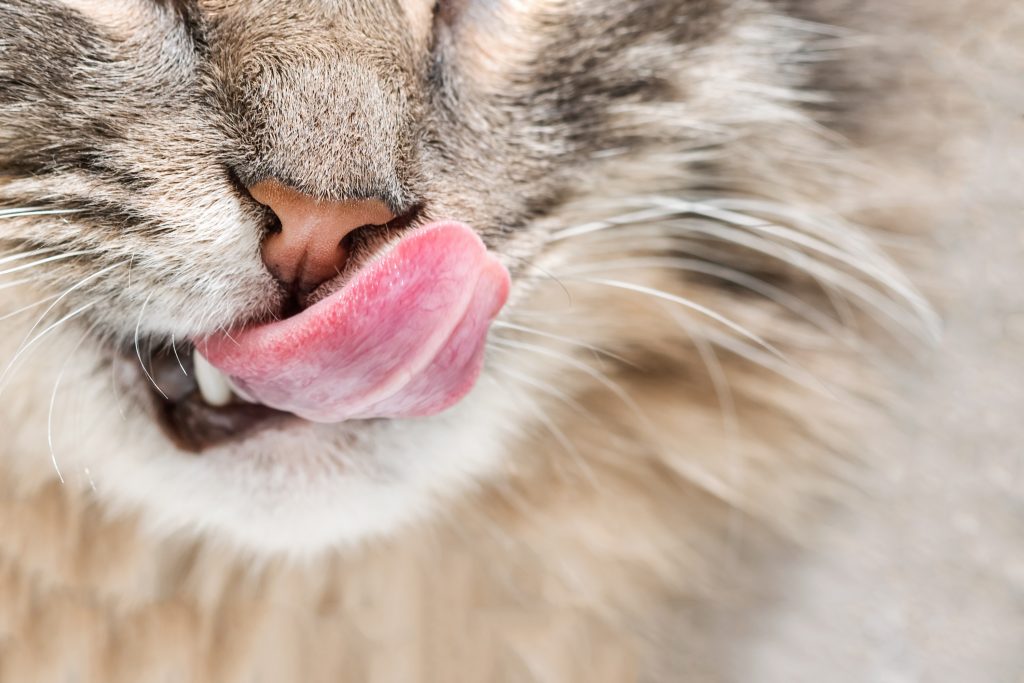
A cat’s tongue isn’t just a tool, it can also indicate their overall health. The tongue should be a good pink color, which would indicate that your cat is getting enough oxygen, and is probably in good health. Discoloration of the tongue can indicate a serious health problem.
Breathing Or Heart Problems
If your cat has a blue or gray tinge to the tongue, then he needs to see his vet. This discoloration can indicate bronchitis, asthma or a lung illness. A blue gray color of the tongue could indicate heart disease.
Kidney Problems
If you cat has a deeper blue, gray or even a purple coloration on his tongue, then it may indicate that there is a kidney issue. Other symptoms would include excessive drinking, excessive urinating, bad breath, mouth sores, vomiting, weight loss, and excessive shedding.
Cancers
Some types of cancer can be common in the mouth and tongue. One of these, squamous cell carcinoma is typically more common in older cats. It can affect the nose, ears, mouth, or tongue. You may notice discoloration, or even sudden black spots on the tongue, but this is not always a symptom of every case. Other symptoms can include loss of appetite, reluctance to eat, excessive drooling, and difficulty eating or drinking.
Some cats can respond well to radiation therapy. Other cats can benefit from a feeding tube, as long as they are otherwise well and have no other health issues.
5. They Sometimes Stick Their Tongues Out
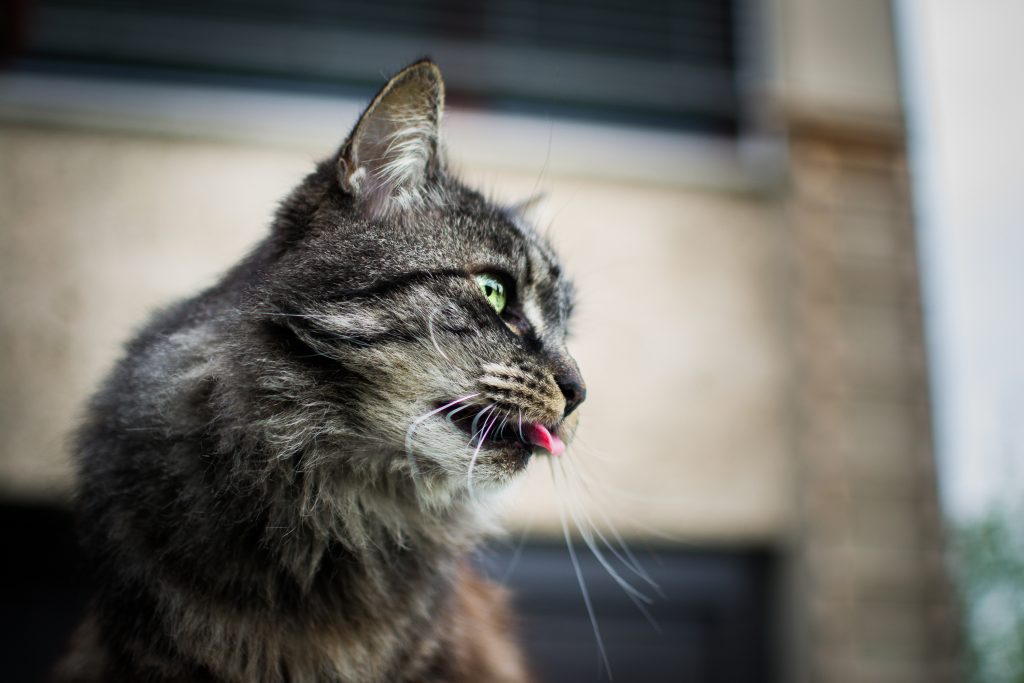
You might have noticed your cat sometimes sticks his tongue out, and leaves it out. This behavior has become known as ‘blepping’. Search the phrase ‘cat blep’ in Google, or on any social media site, and you’ll find hundreds of photos of adorable cats with their tongues out.
Why Do Cats Blep?
There’s a number of possible explanations why cats blep. Sometimes it’s just a cute face that they make, but in other cases, it can be a symptom of a health issue.
Hair Theory
As cats use their tongues for grooming, one theory is that they can get stray hair stuck on their tongues. They stick their tongues out to try to remove the hair.
Forgotten Theory
Another theory is that we catch them off guard while they’re in the middle of doing something else with their tongues, and they just forget to put it back in.
Relaxed Theory
One theory for ‘the blep’ is that when cats are extremely relaxed, their jaws slacken, and this allows the tip of the tongue to poke out. Some cats can be more likely to blep when they’re sleeping, although it may also be due to any muscle relaxing medications.
Missing Teeth Theory
A cat’s teeth, like the tongue, has many purposes. One of those purposes is to provide a barrier for the tongue. If there are teeth missing, then there’s a space that allows the tongue to fall out. However, the teeth don’t have to actually be missing to allow this to happen, especially in flat faced breeds such as the Persian.
Air Theory
Some experts believe that blepping is part of the Flehmen response. The cat sticks its tongue out to ‘taste the air’ and assess any scents or smells.
Health Reasons For Blepping
Blepping can also be a symptom of some other, more serious health concerns.
Dementia
One of the symptoms of feline dementia is an inability to keep the tongue inside the mouth. This alone is not a symptom of dementia, and it would need to be accompanied by other signs, such as staring at walls, being agitated, decreased appetite, or an inability to use his litter tray properly.
Heatstroke
Cats can suffer from heatstroke on very hot days, and may blep as an attempt to regulate their temperature and cool themselves down. You might notice that your cat is drooling excessively, and that the tongue is more red than usual.
Motion Sickness
It’s not just people who can get motion sickness. Cats can too. Some cats stick their tongues out to try to settle their stomachs while traveling in a car.
Respiratory Infection
Cats with an upper respiratory infection can have difficulty breathing, and you may notice that he sticks his tongue out, and almost makes a panting like attempt to breathe. Your cat may also have a decreased sense of balance, and a lack of appetite.
Poisoning
Sometimes cats who have ingested poison will stick their tongues out, and may drool excessively. Other signs can include vomiting, breathing difficulties, retching, and dizziness.
Periodontal Disease
Periodontal disease is another term for gum disease. It can become quite serious if left untreated, and blepping and drooling are among the first signs.
Feline Stomatitis
Feline stomatitis is quite rare, but it is quite serious. It can be linked to gum disease, and there will usually be mouth ulcers and inflammation in the mouth and gums. This can make it difficult, uncomfortable, or even painful for your cat to keep his tongue in his mouth. It can be linked to other long term illness, so a long term treatment plan is usually needed.
6. They Use Their Tongues For Exploring
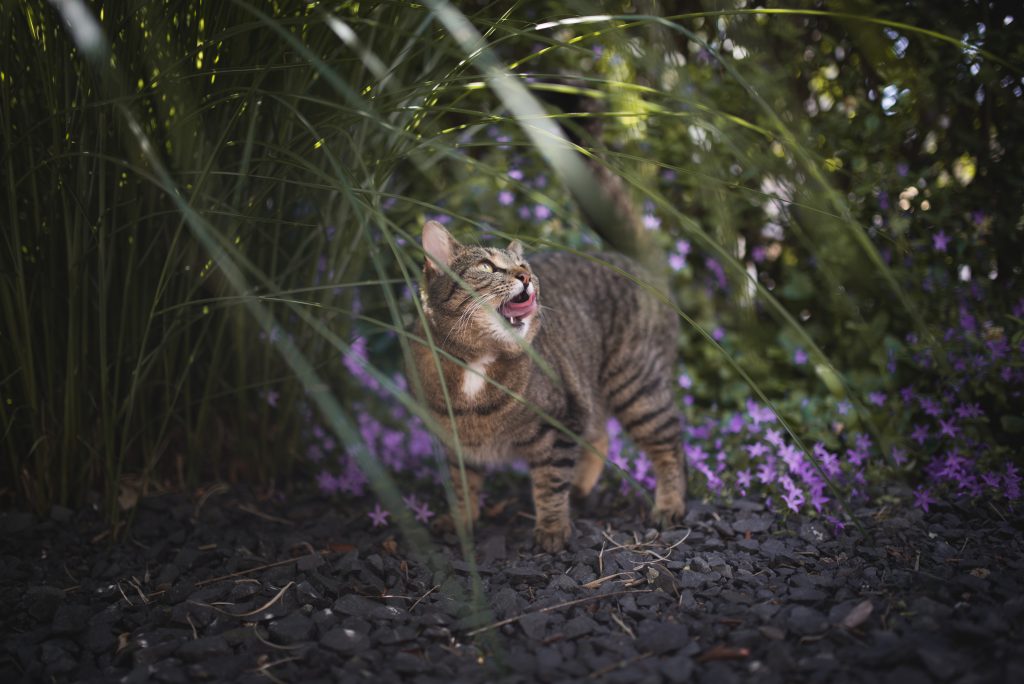
You may have noticed your cat, or kitten, licking areas of your home or furnishings. Cats will also use their tongues to explore the area around them, and assess the purpose of various objects, and whether the object holds any value for them. It’s a normal behavior, but it can lead to problems in some cases.
Cleaning Products
Some cleaning products are toxic to cats, and can be fatal when ingested. Cleaning products that contain phenols, and cleaning products that have quarternary ammonium should be avoided as they can cause health problems.
String
Cats love string, and anything string like, but it can be problematic. If a cat checks a bit of string or yarn with his tongue, his play drive may kick in. Some cats can end up wrapping the string around their tongues as they become more excited in play, which will usually need a trip to his vet.




















